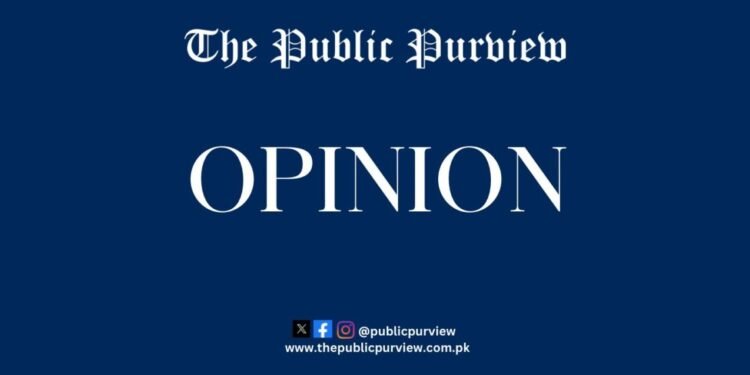Khalil Ur Rehman
The term Khowar, which is also referred to as Chitrali, defines one of the prominent Dardic languages mainly spoken in northern parts of Pakistan. It exists particularly in Chitral, parts of Gilgit-Baltistan, and a few neighboring areas. Small diaspora communities speaking Khowar exist also in urban centers in Pakistan. The term “Khowar” comes from the word “Kho,” referring to the Kho, the most important ethnic population of Chitral and thus the meaning of this term, ‘language of the Kho.’ Khowar has more than 500,000 speakers, thus occupying an important place in the folklore and linguistics of that community. Traditionally, this language thrived and was developed within isolated Hindukush valleys that were historically known for linguistic heterogeneity and complex cultural confluence. Cacopardo said that Chitral is one of the most linguistically diverse regions in the world.
Khowar Language can be traced down its history to Dardic of the family of the Indo-Aryan group of languages while being a descendant itself to the larger group that originated in the Indo-European Language family.
Authors George Grierson and Morgenstierne have exhaustively described Dardic group languages, with their reference including Khowar. Grierson’s linguistic surveys of India (1901-1928) were some of the earliest studies to classify Khowar as a member of the Dardic group. Researchers believe that the language has evolved through centuries of interaction with Persian, Arabic, and Turkic influences because of Chitral’s historical connections with Central Asia and South Asia. This linguistic syncretism is reflected in the Khowar vocabulary, which is highly indebted to these languages but still maintains a distinctive grammatical and phonological structure. Traditionally, Khowar has been an oral medium of communication; literature and poetry have mostly been transmitted through generations in the form of oral traditions.
Folk songs, ballads, and tales in Khowar are of significant interest to the Kho people, as these oral traditions hold within them the history, folklore, and values they share in their culture.
The language is fluid among its users and is a tool for communicative inter-personal relationship expression and also for their identification in culture. Despite the increasing role played by dominant languages like Urdu and English in the educational institutions and media, Khowar still remains the first language for a majority of the population of Chitral and is continued as a marker of group identity and identity during events of celebration such as marriages, festivals, and religious ceremonies. Apart from being a linguistic tool, it is also an important and very deep means of cultural heritage as well as identity for the people of Kho. For nearly a century, Khowar has acted as their collective memory as well as oral tradition. Besides written literature Khowar developed during the past century, its role for daily communication.
Prominent among them are many Khowar literary figures. Their works have contributed to Khowar literature, as their works aim to preserve the language and document its grammar, poetry, and stories. It is also, according to scholars, essential in preserving the unique view of the world of the Kho. Khowar faces heavy threats in the modern world, though. UNESCO says Khowar is a language that is endangered, and its use is on the decline with the youth. Globalization, particularly through migration and the entry of formal education systems, which often replaced Khowar with the use of Urdu and, more recently, English, has marginalized the language, even in cities. Generally, the young generations tend to learn those languages which have greater economic and social utility compared to Khowar.
Besides that, the government policies regarding regional languages and lack of Khowar as a medium of formal education further worsen the scenario. In the absence of serious attempts to promote and maintain the use of Khowar, it may be lost in the mouths of older speakers as younger speakers move toward the dominant languages. Still, there are current attempts for the survival and revival of Khowar. Local cultural organizations and scholars have worked to preserve and advocate for Khowar in the form of written materials, poetry, and other educational activities. The starting of the Khowar language radio programs and cultural activities has played an important role in making the people aware of the language and its importance. For instance, Regional Radio Pakistan Station operates programs in Khowar, thus enabling listeners to relate themselves to their linguistic heritage. Some researchers and linguists are striving to bring out comprehensive dictionaries and grammar books, through which the Khowar language would be presented before the readers in a well-formatted and formalized fashion.
Most notable among these endeavors have been those of Rehmat Aziz Chitrali, who has channeled energies into compiling resources and advocating for Khowar in digital formats, which-if sustained could assist with preserving the language into the future. Apart from that several institutions like Preserved Cultures and FLI are also working for the preservation of Khowar culture and regulation of language.
Khowar is more than a way to communicate; it forms the cultural identity, history, and heritage of the Kho people. It originated in the Dardic language family. Its long, time-spanning evolution shows it richly flavored with history. Even though it is dynamically active in the mouth of native speakers, modernization, the drift of the language and governmental negligence have it say against this language. By such combined efforts by scholars, culture lovers, and the local inhabitants, Khowar can also stay afloat as an actively speaking language. Recording, inclusion in school curricula, and its oral as well as written use would make it survive. Preservation of Khowar is not only a matter of linguistic diversity but also the cultural and historical identity of the Kho people for generations to come.





















